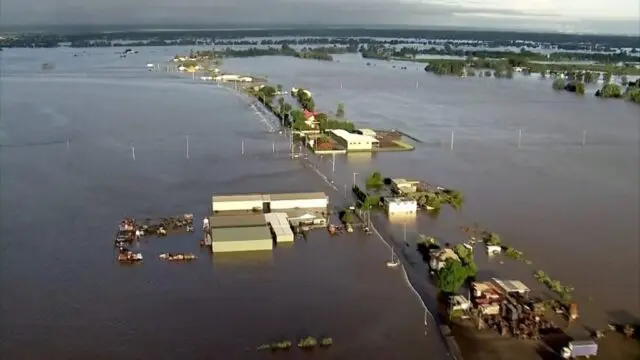The La Niña phenomenon caused 2022 to close with the highest figures in terms of the rainiest years, and also on the list of the driest. The Pacific region received 52% more rainfall; the Central Valley, 34%; and to the west of the North Zone, up to 24%. Meanwhile, according to the Limón meteorological station, the North Caribbean had 24% less rain and the South Caribbean registered 21% less.
“It was a quite extraordinary season in every aspect. Our country once again became polarized in 2 very different conditions. On the one hand, this closes as the second year with the most rains since 1949, the accumulated ones double those of the previous year. And, on the other hand, it is the driest year on record”, said Luis Fernando Alvarado, from the Climatology Unit of the National Meteorological Institute (IMN).
According to the 2021 data, the Pacific was rainier with percentages of 3% and 13% more, the North Caribbean had a deficiency of 7% less and the South Caribbean reached 6% more. This 2022 the country became polarized, on the one hand a surplus of rains and on the other a deficit. (Courtesy IMN)
La Niña phenomenon
According to experts, the 2022 La Niña phenomenon is the second strongest in the last 40 years, and the events have increased in frequency and intensity. The weather phenomenon has been in the country for 31 consecutive months since May 2020. “To a large extent, this phenomenon has been the cause of the intense rainy season this year and generated an intense cyclone season in the Caribbean Sea, closing the season with four hurricanes and one tropical storm”, Alvarado said.
Data in San José indicate that it was in 2017 and 2022, the most intense rainy seasons, followed by 2008, 2020 and 1981. In addition, La Niña was present in the 4 rainiest years registered in the province josephine. Experts estimate that this phenomenon will end before March 2023, which means that it will no longer affect the rainy season. Also because La Niña will persist until February or March, a very intense dry season is not expected, possible occasional rains are expected.

Hurricane season
Formally, on November 30th, 2022, the hurricane season ended, and it closed within the normal range. Costa Rica felt the direct effects of Tropical Storm Bonnie, in July, and indirectly those of Hurricane Julia, in October. “This 2022 there were 14 cyclones throughout the Atlantic basin, which includes the Caribbean Sea and the Gulf of Mexico. Out of those, 6 were tropical storms and 8 were hurricanes. “This means that it was similar to the historical average, including a reduction compared to 2020 and 2021”, explained the IMN.
For example, in 2021, 21 cyclones appeared in the season; of those, 14 were tropical storms and 7 hurricanes. However, in 2022, the Caribbean Sea presented greater cyclonic activity, since 5 phenomena were formed; out of them, 4 reached the hurricane category. The first tropical cyclone to form was Alex in June, and the last to form was Nicole, on November 11th, 2022.
Affectations
According to data from the National Emergency Commission (CNE), more than 6,200 flood reports were recorded and more than 5,000 people had to be treated in shelters. “This year was marked by intense rainy activity, strengthened by factors such as the Intertropical Convergence Zone, the La Niña phenomenon, and extreme hydro-meteorological events such as Hurricane Julia and Storm Bonnie. “Not having enough with these factors, it must be added the inappropriate use of land, little urban planning, invasion of risk areas such as riverbeds and sewerage problems”, said Lidier Esquivel, from the CNE.
In addition, the cantons that have been most affected by the floods are:
• Golfito, 552 events
• Homeless, 459 events
• Quepos, 410 incidents
October is the month with the highest number of emergencies, for a cumulative 1,511 reports. The end of the hurricane season also marks the beginning of the rainy season on the Caribbean slope and the North Zone, as well as the season of fronts and cold thrusts.
Bonnie storm impact
On the other hand, the CNE preventively mobilized 3,536 people from different communities due to the imminent impact of tropical storm Bonnie. To meet the needs of the sheltered population, as well as supply municipal and regional warehouses nationwide, the CNE delivered:
• 12,000foams
• 23,000 thousand food rations
• 18,000 thousand blankets
• Collapsible cots
• Rolls of toilet paper
• Bottled drinking water
• Masks
• Cooking oil
• Wet wipes
While, in the course of 2022, the Executive Branch made 3 emergency declarations related to rains and 59 alerts were issued at its 4 levels (green, yellow, orange, and red) for the activation of the Emergency Committees.

